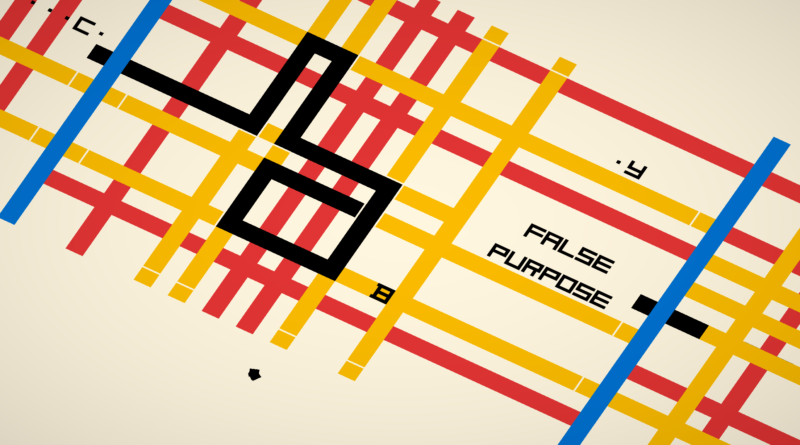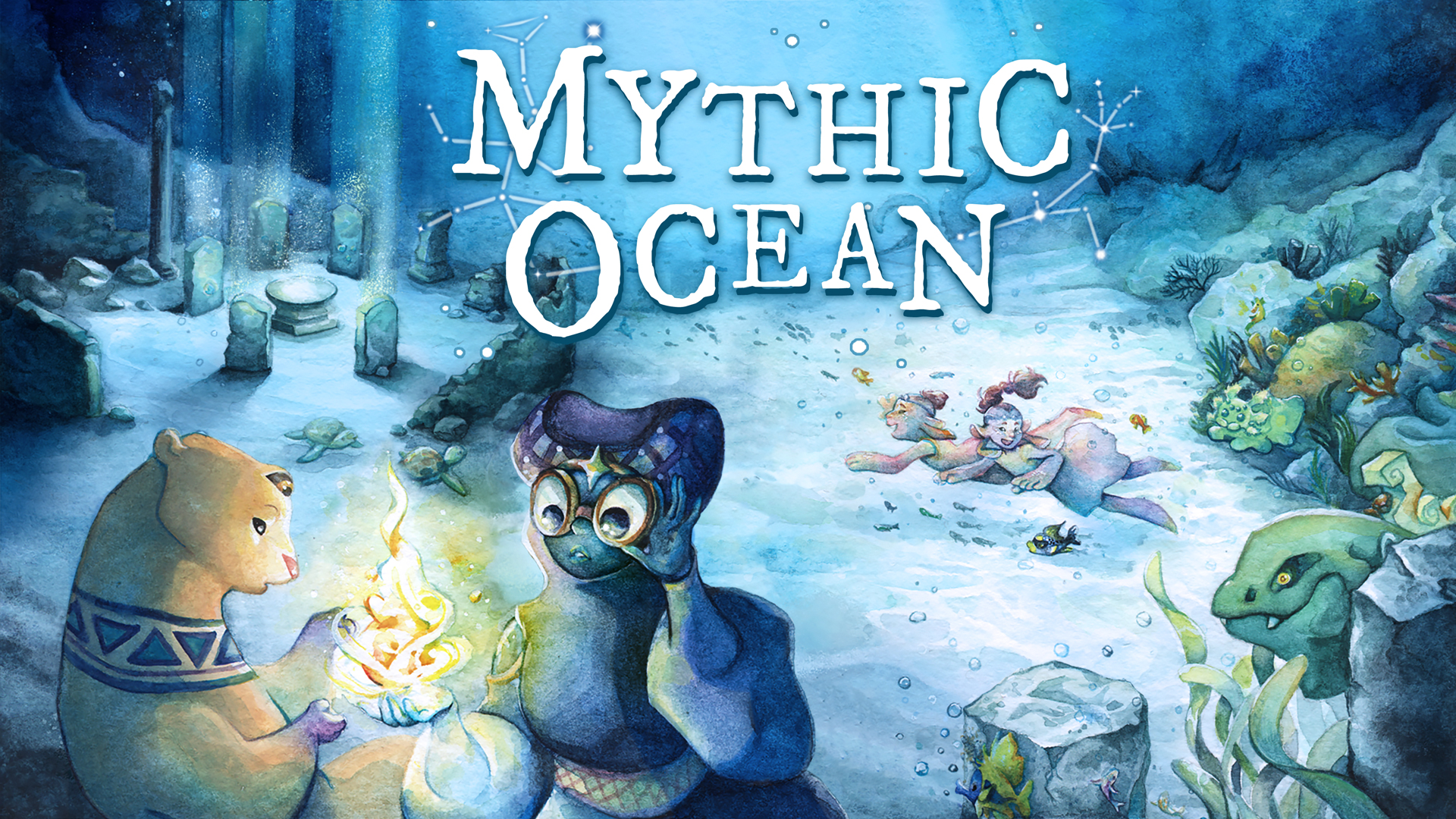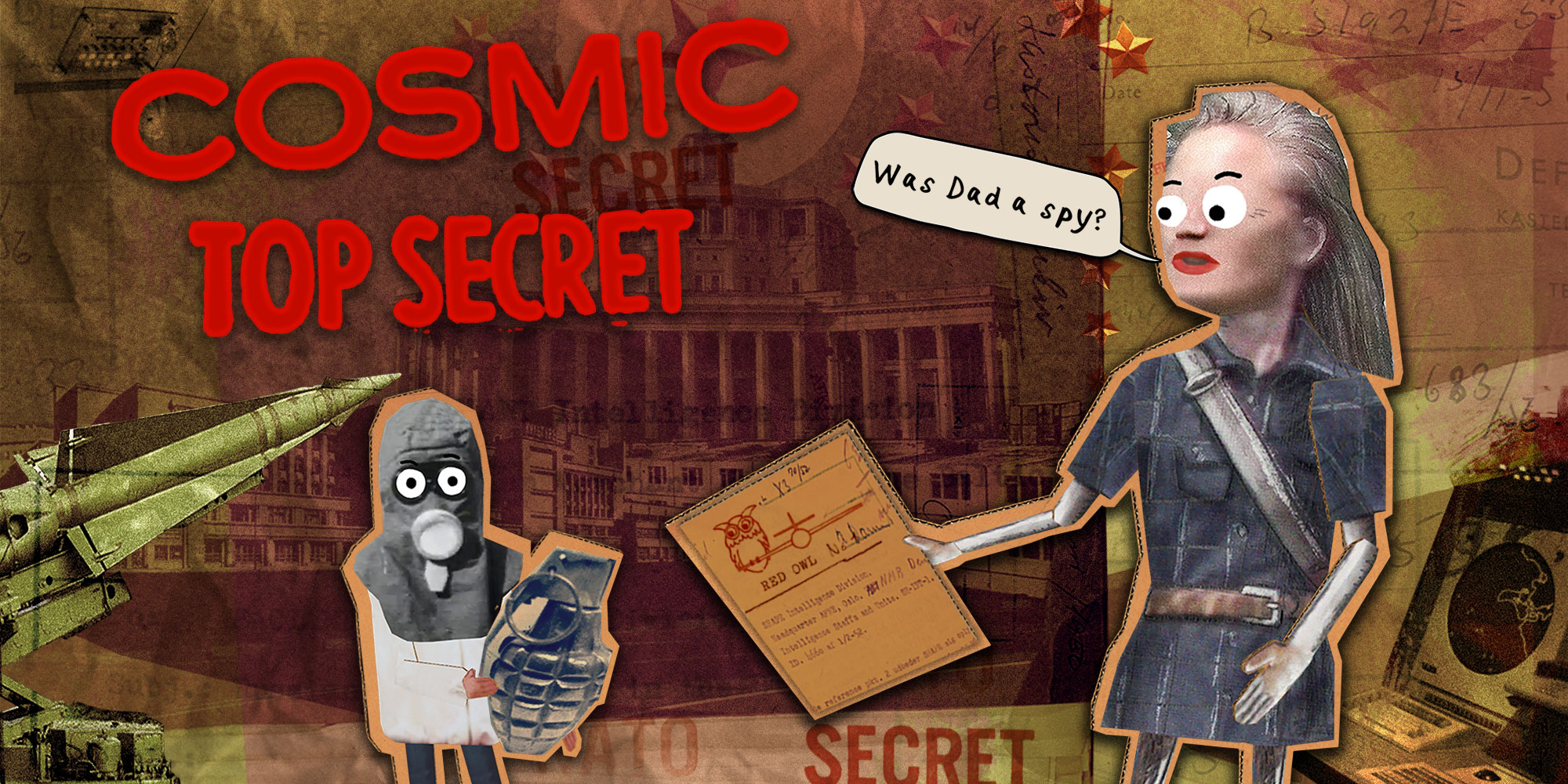Please, Touch The Artwork Review (Switch) – Petite Piet Puzzles
Adapting the constants in Piet Mondrian’s art work into brain teasing puzzles, Please, Touch The Artwork finds a new natural home on Switch. The Finger Guns Review.
Modern art can be challenging. Take a perusal around the internet and it’s easy to find many, many articles and YouTube videos lambasting the work of the abstract artists of the time. Understandably so. That period between the start of the 20th Century and the start of WWII inspired deeper symbolism and bolder, more exigent art that can look just like random lines and colours without some context. Even with the context, some modern art looks like it could have been made by an 8 year old.
That’s the feeling that Belgian developer Thomas Waterzooi had when engaging with Modern Art. He thought to himself “What should I feel? Can my little sister do this?“. To explore his own complex relationship with this art work, he developer the game ‘Please, Touch The Artwork’. Adapting the constants of Piet Mondrian’s art work into playable puzzles, Waterzooi crafted his own meaning, story and mechanics in the clean lines and primary colours of the famous Neoplasticist’s art. Originally released on PC via Steam in January ’22, this ingenious twist on artistic consumption is finding its way to Nintendo Switch (store link) via publisher Nakana.io (A Night At The Races, Stilstand) on Sept. 3rd.
The first and most obviously impressive thing that ‘Please, Touch The Artwork’ does is boil down Piet Mondrian’s art into its component parts to form a game. Examining three of the Modern artists’ most iconic works (Boogie-Woogie, Composition and New York City) Waterzooi has very clearly identified the unchanging, unique aspects of each series. These aspects have then been translated into three different puzzles and stories designed around the artistic style. No matter which of the 3 puzzles you choose to start after a short introduction, I believe you’ll be hard pressed to not feel at least moderately impressed with the marriage of form and function on display.
De Stijl AKA The Style
I started my own journey through the head scratchers of ‘Please, Touch The Artwork’ with the puzzle series called De Stijl (The Style). In case you’re not aware, De Stijl is the name of the Dutch art movement centred on principles of geometry, asymmetricality and the use of primary colours. These puzzles are all based on the Composition series from Mondrian. They’re probably his most easily recognisable works, consisting of just line and the occasional block of colour.
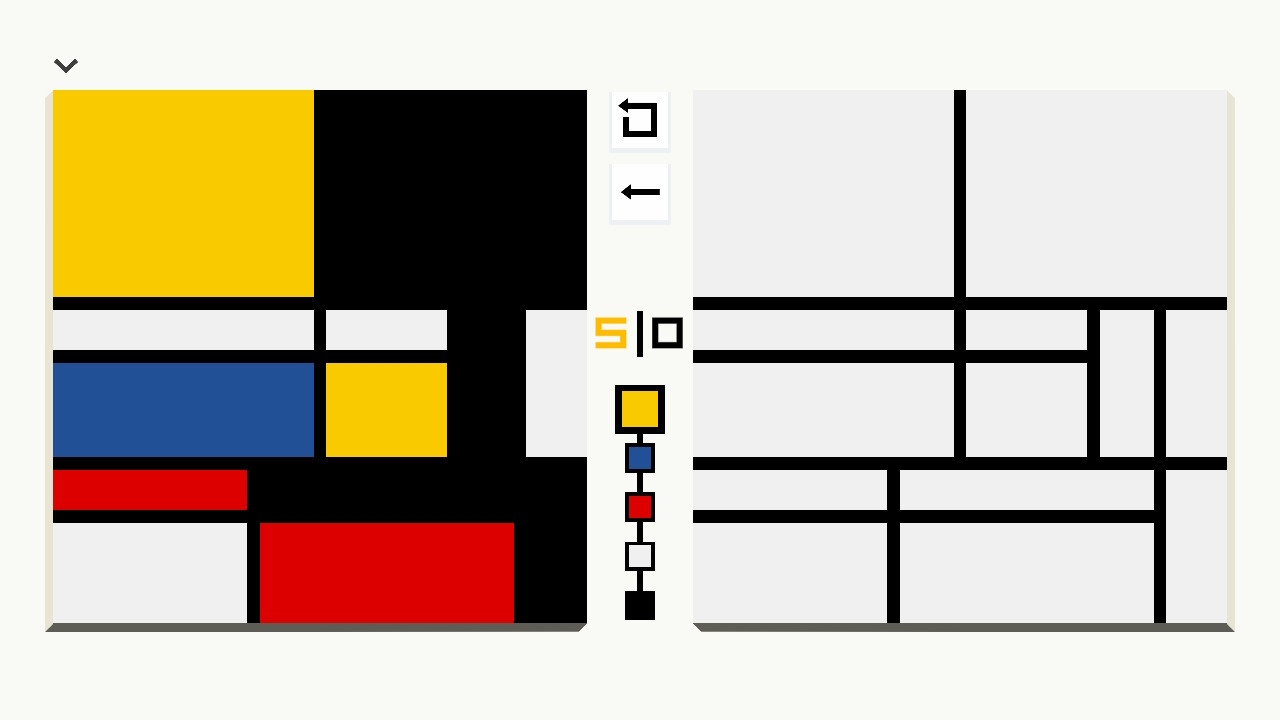
In this puzzle series, you’re presented with a painting on the left side of the screen in the Composition style which you’re got to recreate on a canvas on the right. To do so, you’ve got to add lines and spread colour. There’s a process to this – at the centre of the screen are a list of steps you’ll progress through. These steps can include adding a line or colour to the right hand canvas. Lines can be spawned from various junctions on an existing line. When applying colour, you’ll be asked to click on a space on the canvas. Colour will then spread outwards from that confined space until it hits another line. Here, it’ll stop. The aim is to determine where to place the lines and where to start colours from along each step of the process so that by the time all of the steps are completed, the painting on the left has been replicated on the right.
The De Stijl puzzles in ‘Please, Touch The Artwork’ do a fantastic job of introducing these mechanics before ramping up the difficulty in a gentle curve. In the early puzzles, you’ll simply be adding line or colour on relatively simple canvases. Before the series finishes, you’ll have to do both as part of the process while thinking a few steps ahead to ensure you’re not going to mess it up for your future self. Even if you do, you can restart the puzzle or undo your last action.
Each time a new mechanic or colour is introduced to the puzzle build, the game explains it a little, or at least an interpretation of it. The original paintings were all about contrasts and these little blasts of knowledge feed into that notion, explaining the intent of using that hue.
I also need to mention that while you’re playing through the De Stijl puzzles in ‘Please, Touch The Artwork’, there’s light jazz playing in the background which is frankly fantastic. It constantly reminded me of the music found in LA Noire, incidentally inspired by the same era. I could sit and listen to the music associated to these puzzles for hours.
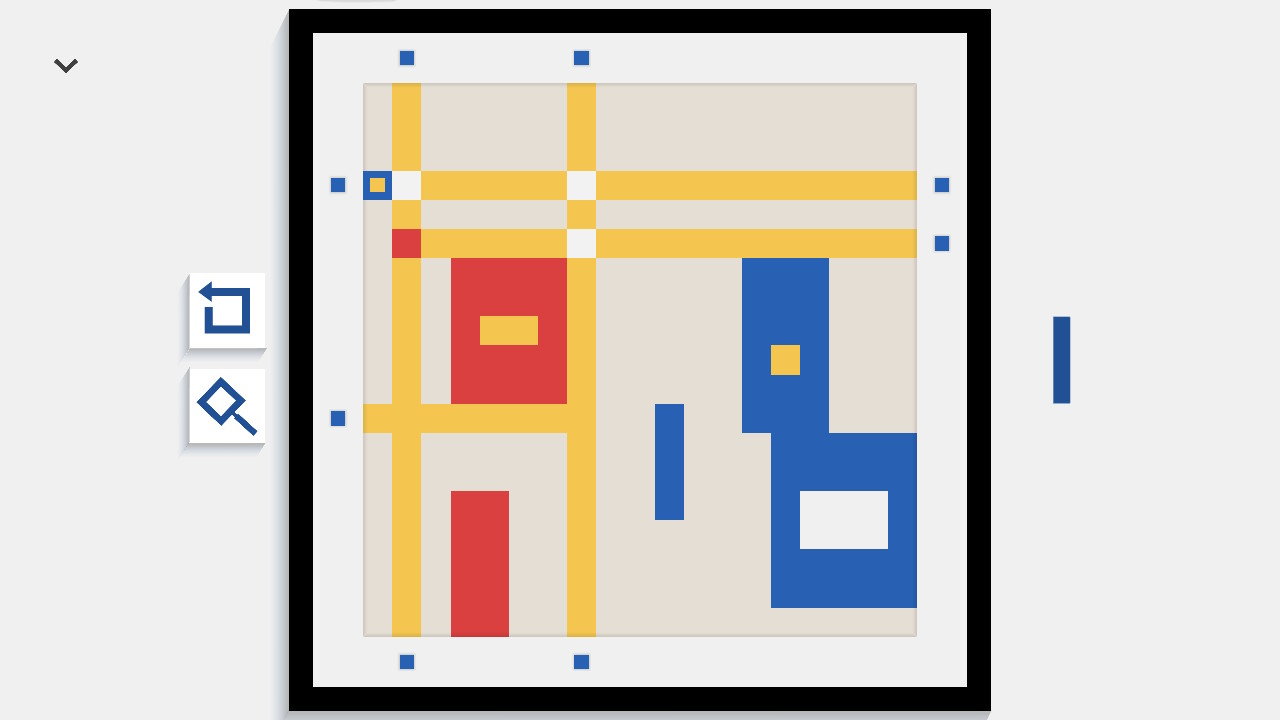
Boogie Woogie
The second type of puzzle in ‘Please, Touch The Artwork’ is based on the Broadway and Victory Boogie-Woogie pieces from Mondrian. Colourful multicolour bars that cross across the canvas makes this art quite different from the Composition pieces. The game interprets that in the same way, presenting a very different type of puzzle than the De Sitjl series.
The way that ‘Please, Touch The Artwork’ interprets this artwork and adapts it as a game is quite ingenious. Here, “Boogie” is a small square and “Woogie” is a slightly larger one with an empty centre. When together, they form a perfect blue square like can be found in Mondrian’s art.
Each puzzle in this series sees Woogie places along one of the coloured bars, usually at the end, and Boogie on the outside of the canvas. The aim is to choose which of the coloured bars in which to send Boogie on so that it can reach Woogie.
At the start of these puzzles, that’s very simple. You simply need to find the bar of colour which Boogie will travel down in order to be reunited with Woogie. You tap a small square on the outside of the canvas and away they go, travelling the rails of yellow. Before long, blocks of colour find their way onto the yellow bar roads. These blocks all have an influence on Boogie’s movement, turning them left, right or reversing its direction. You’ve only got a few attempts at each puzzle and if you run our of chances, the formation of the puzzle will change but with the same level of complexity the next time you try it.
That level of complexity ramps up throughout the Boogie Woogie levels alongside a story that plays out between the characters. At its most difficult, you’ll have to send Boogie into a level that has multiple different direction changes and tunnels, black blocks which transport Boogie (or, at times, lines of coloured blocks) from one part of the level to another.

It’s these tunnels that threaten to spoil the Boogie Woogie levels of ‘Please, Touch The Artwork’. In a handful of the levels, there are multiple twists and turns of direction and a number of tunnels. This introduces a high level of trial and error. With multiple entries and exits from these tunnels, you might have to try some things out before the solution becomes clear. If you don’t manage to get lucky the first few attempts at the puzzle, it’s easy for these puzzles to feel unnecessarily tricky.
That foible aside, the Boogie Woogie levels of ‘Please, Touch The Artwork’ are an impressive blend of puzzle mechanic and story that’s surprisingly touching. They’re undoubtedly the most challenging puzzle type in the game but are still very accessible too.
The City The Never Sleeps
The third and final puzzle sequence in this game are based on Piet Mondrian’s New York City works. A lattice of interlinked coloured lines, this work supposedly represented the vibrancy and harmony of life in New York. It’s an evolution from the contrasts shown in the artists previous work which, as you might have predicted at this point, culminates in yet another type of puzzle type in ‘Please, Touch The Artwork’.
In this series of puzzles, you play as a black line. This black line starts on the left border of the screen and must travel through the coloured lanes of a maze made up to look like the New York City artwork. Your path with weave in and out of other coloured paths like going over and under bridges as you move through it. The aim is to collect every small black square which has been strategically placed around each level. Once you’ve collected them all, an exit to the level will appear on the right to move you onto the next level.
Each one of the black squares the player collects unveils a letter. These letters form short sentences which, when combined via progress, form a poetic story of sorts. The story partly corresponds to the evolution of the levels which get busier, tighter and more difficult to comprehend. The further you progress through this series of puzzles, the further the black squares are spaced apart and the more you’ll have to think about your path forward.
Of all the puzzles in ‘Please, Touch The Artwork’, this is the most simplistic. It’s less of a head scratcher and more zen like exploration. There’s no need for retries or lives here. You’re just making your way around a coloured maze while the chilled music and vibe washes over you. The mode culminates in a few unique levels that further evolve the formula in a surprising way which I won’t spoil here.
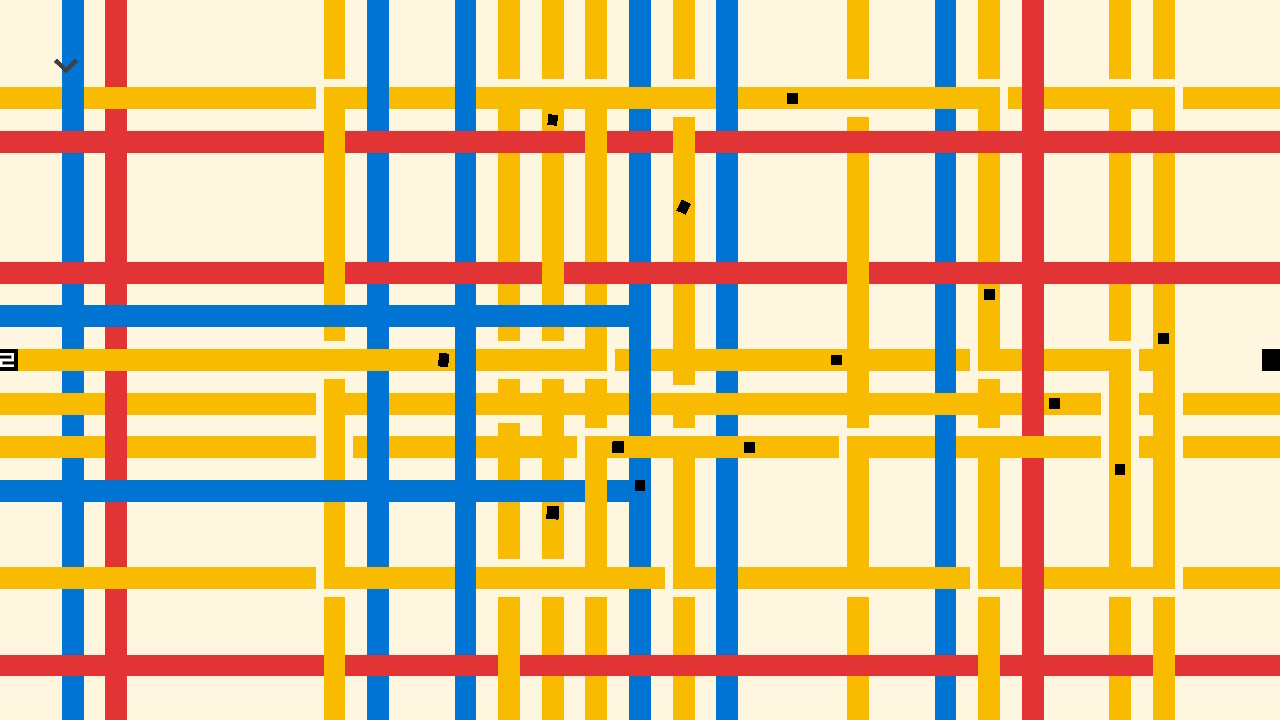
You really should touch the artwork
‘Please, Touch The Artwork’ is very accessible. There’s no time constraints on any of the puzzles so they can be tackled at whatever pace the player desires. If you happen to get stuck and fail at a particular puzzle a few times, the game will offer hints. This will show you solutions to the puzzle a step at a time. If you just want a starter for 10, you can have that. If you’re really flummoxed, you can just get the whole puzzle solution too. Your usage of these hints will likely influence the length of time the core content of the game lasts. It took me just under 3 hours to complete the core content and I rarely used the hints system. I imagine you could half that if you use the hints whenever they’re available.
My only gripe with ‘Please, Touch The Artwork’ is that it exclusively uses the touch screen of the Nintendo Switch. For the De Stijl (The Style) and Boogie-Woogie puzzles, this is actually the perfect input method. For the New York City themed mazes however, this is a little awkward. You have to swipe across the screen in the direction you wish to move and in some of the mazes, this can feel really unintuitive and clumsy. I think it would have been advantageous to include the use of the thumb sticks during these particular puzzles.
That small issue aside, ‘Please, Touch The Artwork’ is an impressive creation. It’s art imitating art that also demonstrates an insightful way of consuming it in a way to reveal a deeper meaning personal to the viewer (or in this case, the game creator). While Piet Mondrian’s art work can be difficult to appreciate because of its relative visual simplicity and obfuscated symbolism, this game interprets it in a new way that I doubt has every been considered before. I’ve certainly never seen celebrated Modern Art consumed and reworked in this way, making this an undeniably unique experience.
An incredibly accessible game, ‘Please, Touch The Artwork’ is a masterful interpretation and adaptation of modern art into well designed story and puzzles. There’s a few foibles to work around but otherwise, this is a unique experience that comes with a strong recommendation.

Please, Touch The Artwork launches on Nintendo Switch on September 3rd, 2022. The game is already available on PC.
Developer: Studio Waterzooi
Publisher: Nakana.io
Disclaimer: In order to complete this review, we were provided with a promotional copy of the game. For our full review policy, please go here.
If you enjoyed this article or any more of our content, please consider our Patreon.
Make sure to follow Finger Guns on our social channels –Twitter, Facebook, Twitch, Spotify or Apple Podcasts – to keep up to date on our news, reviews and features.
